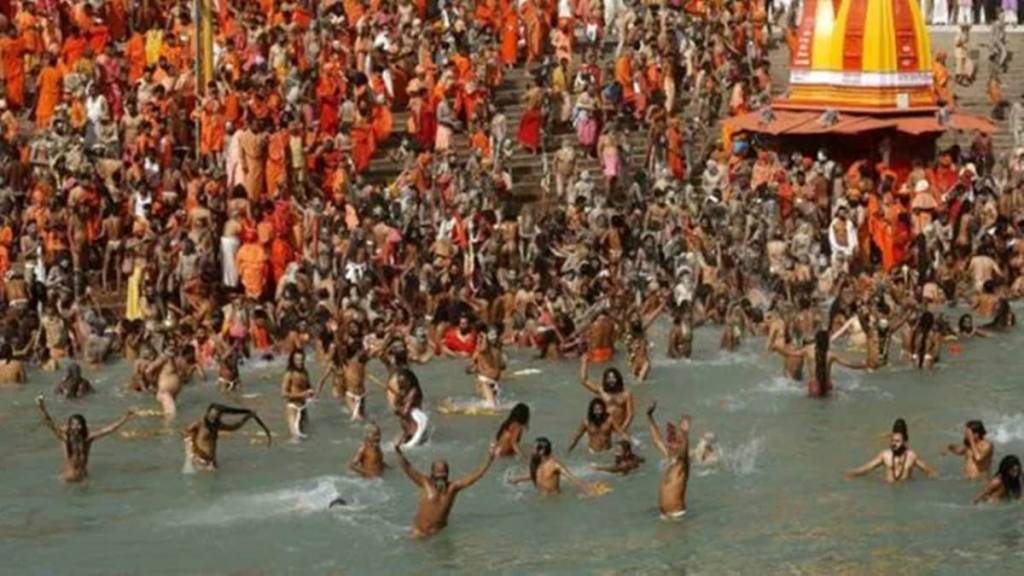Scheduled from January 13 to February 26 in Prayagraj, Uttar Pradesh, the Maha Kumbh 2025 is expected to draw a staggering 400 million devotees over 45 days. This year’s gathering offers brands a once-in-12-years opportunity to connect with a diverse audiences at both grassroots and digital levels. As per estimates, brands are expected to splurge a mammoth Rs 3,000 crore during the weeks of festivities. “This Kumbh holds special significance as this particular event occurs once in 144 years, encompassing 12 Purna Kumbh Melas,” says Ashish Vohra, founder & CEO of Onora Hospitality, which is focusing on religious tourism. “We aim to leverage it through two of our camp sites, and expect revenues of Rs 12-15 crore over two months.”
Many tech brands have also seized the opportunity. Park+, for instance, is trying to sort some of the logistical challenges, enhancing brand visibility in the process. “With over 40 crore pilgrims in attendance, we expect over 25 lakh vehicles to converge into Prayagraj. Devotees will be able to discover, pre-book and pre-pay for a safe and secure parking spot on our app,” says Amit Lakhotia, CEO & founder. The company will introduce a FASTag-enabled parking management system to accommodate up to 3 lakh vehicles and will also set up EV charging stations.
For brands like PayNearby, the captive audience offers the perfect cohort for utility-driven engagement. Jayatri Dasgupta, chief marketing officer, says the company is working to bring essential digital and financial services — such as cash withdrawal, mobile recharge, and ticket booking — to the Mela. “We aim to connect with Bharat on a massive scale, ensuring essential services reach everyone,” she notes.
As new-age brands jostle with legacy advertisers, experts say they are using every tool in the book to grab attention. Yasin Hamidani, director of Media Care Brand Solutions, notes, “In 2013, the focus was on physical branding. Today, enhanced infrastructure and tech-savvy pilgrims are enabling app-based services, influencer collaborations, and immersive experiences.”
Changing rules
Marketing spends at the Maha Kumbh can range from `5 lakh for basic activations to several crores for multi-channel efforts, say experts. Back-of-the-envelope calculations show brands aiming for significant visibility need to allocate `50 lakh to `1 crore over the eight-week period, while smaller campaigns can achieve targeted engagement with more modest budgets.
During previous Kumbh Melas, larger brands led the procession, sponsoring rest areas or setting up branded tents offering refreshments. Smaller players have used the event to sample everyday essentials and have even partnered with local vendors for such services. While traditional touchpoints remain relevant, this time around, the integration of digital tools is crucial to maximise exposure, say marketers.
Despite the opportunity, religious marketing is not a simple task. It requires careful research, planning, and demonstrating sensitivity to popular beliefs to avoid offending or alienating anyone.
So what is the best way to grab eyeballs without appearing to hard-sell?
Given the predisposition of the visitors, brands would do well to prioritise their religious and cultural sensibilities while crafting their campaigns. Hamidani advises focusing on storytelling rooted in tradition, influencer tie-ups, and sustainable initiatives. Authenticity and empathy are key to leaving a lasting impression.
The thing to remember is that one should not use the tools at your disposal to manipulate or coerce your customers into buying your products or services. In short, say no to hard-selling. The way to go would be to use the platform to support customers and their faith. As Vaishal Dalal, co-founder & director of Excellent Publicity, puts it: “The Kumbh is a canvas for innovation. From ground-level initiatives to experiential marketing, the focus should remain on meaningful associations.”


